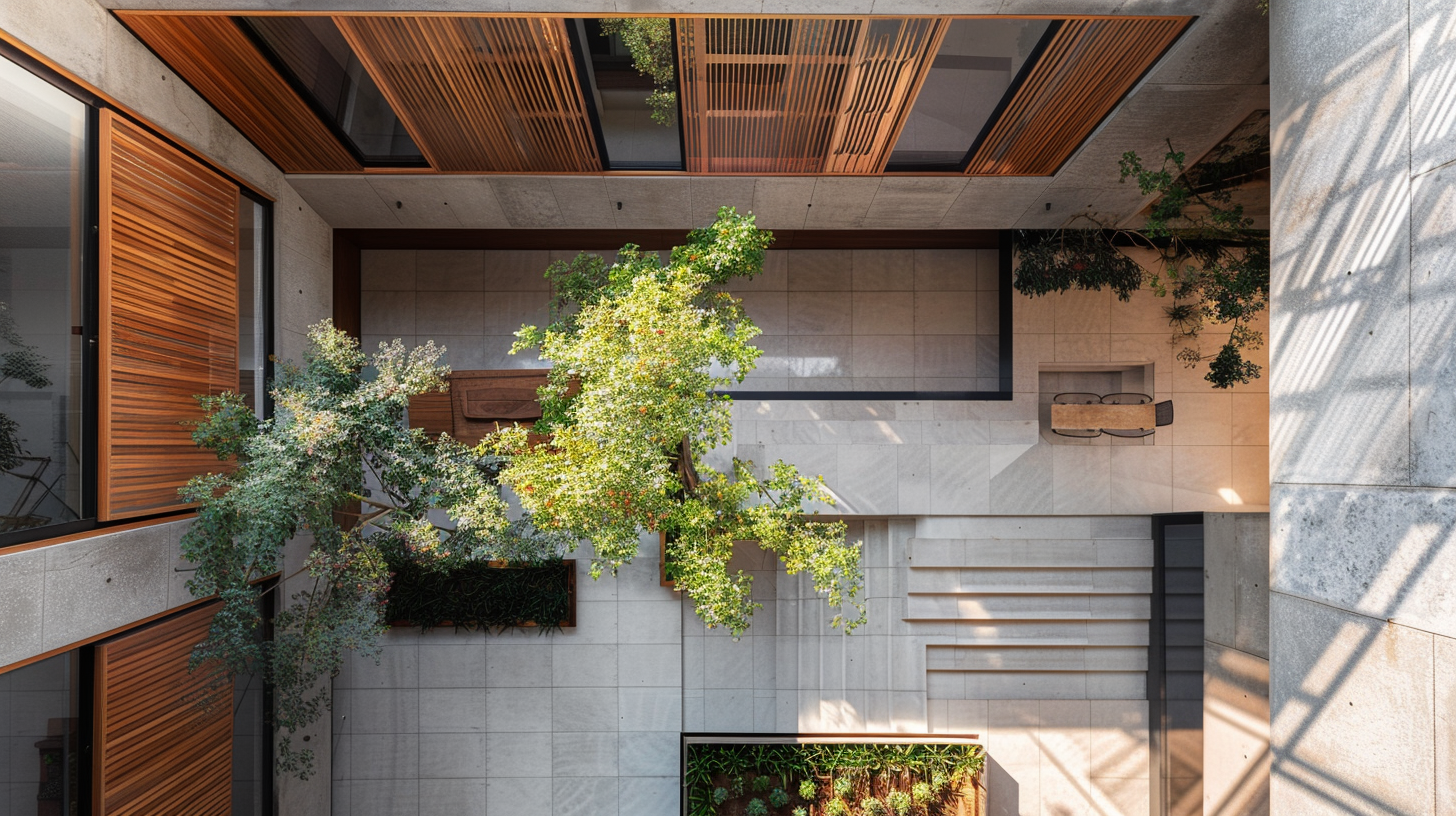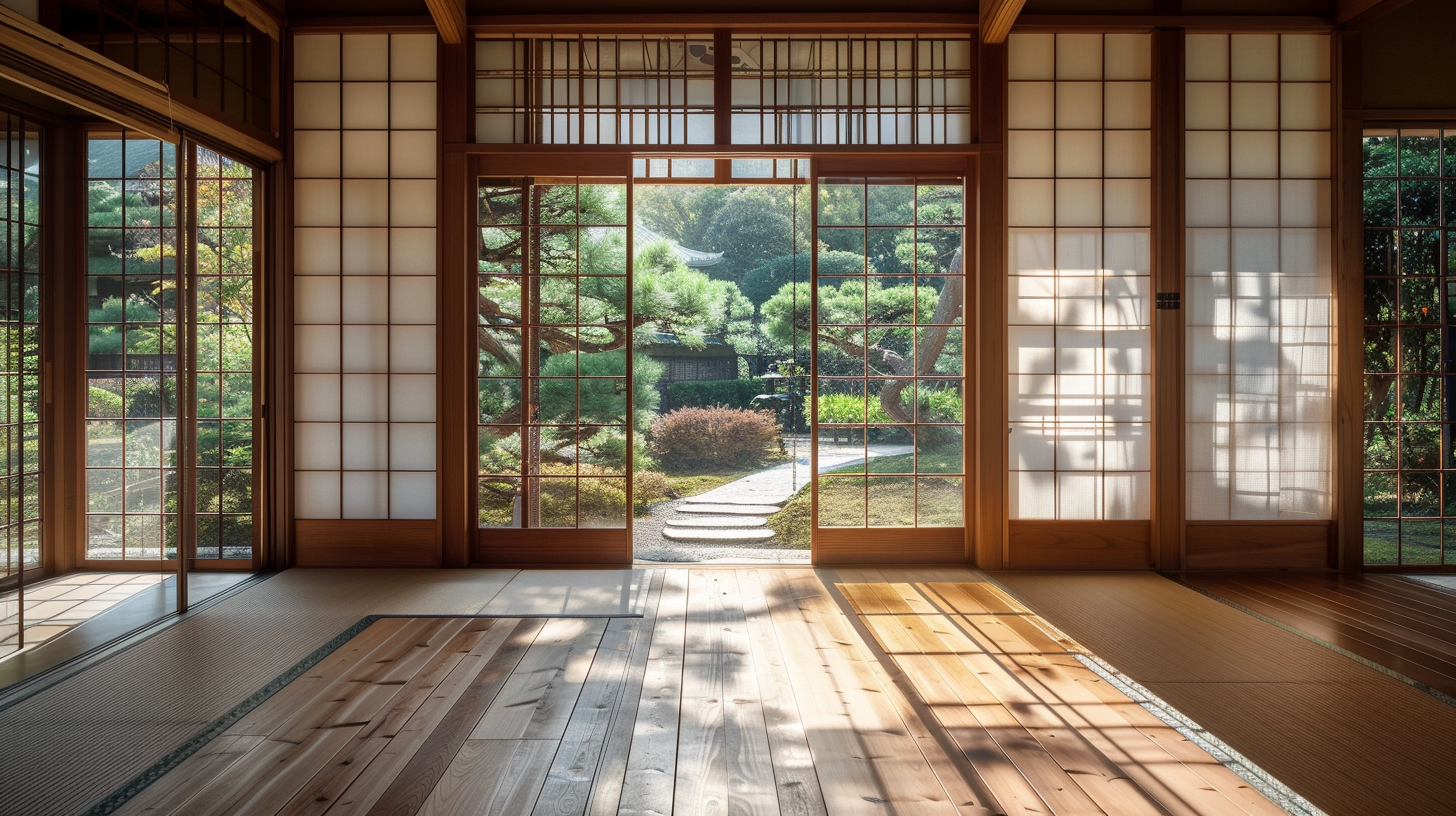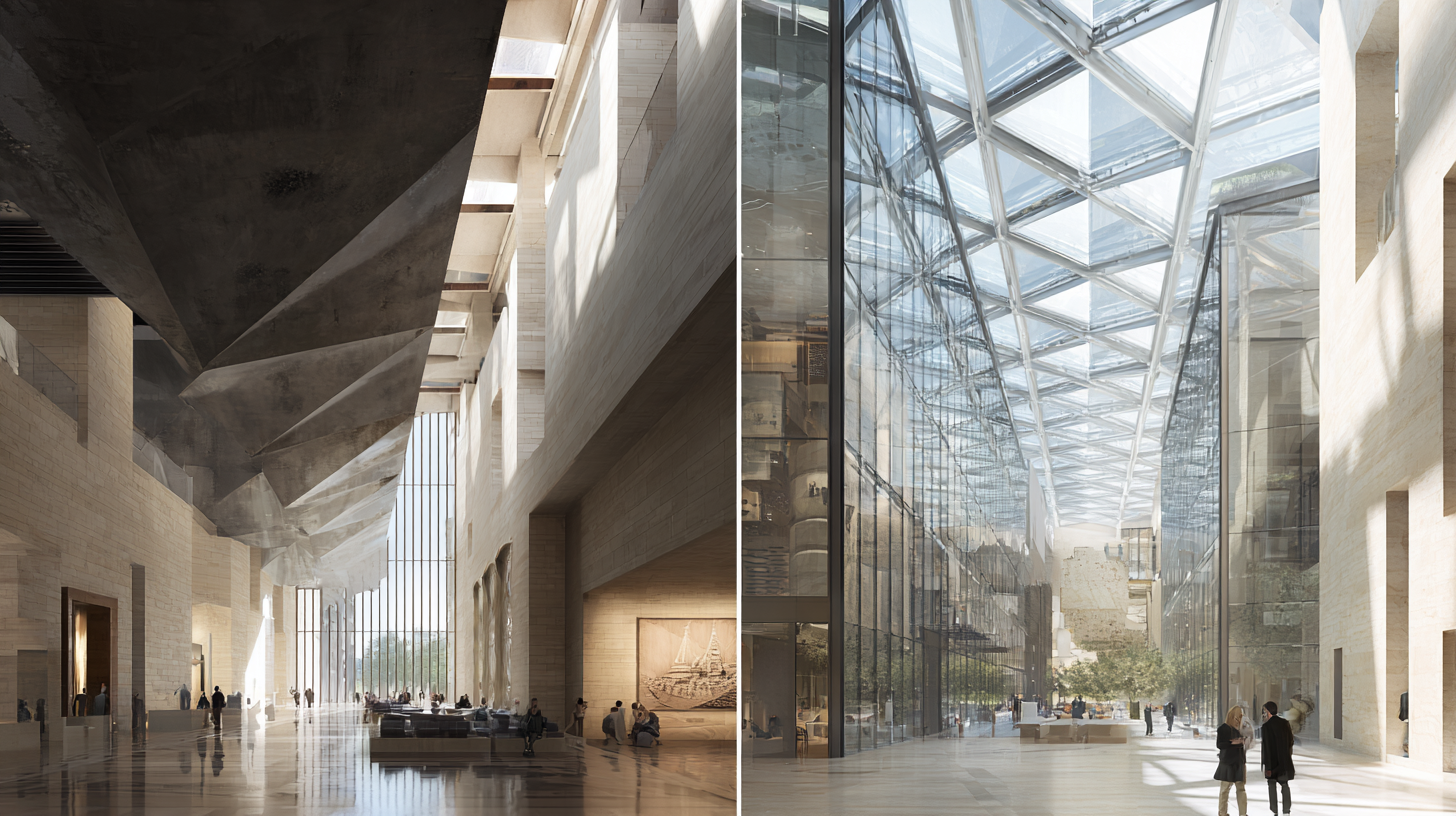The Elements of Architectural Form and Space

Introduction
Architecture is the art of defining space. This foundational topic explores how architects manipulate form, mass, and void to create meaningful environments. Key focuses:
- Primary Geometries – The building blocks of design
- Form vs. Space – The interplay of solid and void
- Spatial Perception – How humans experience architecture
- Historical to Contemporary Examples
Primary Geometries in Architecture

Basic Forms
| Form | Characteristics | Example |
| Cube | Stability, rationality | Mies van der Rohe’s Farnsworth House |
| Sphere | Unity, perfection | Buckminster Fuller’s geodesic domes |
| Pyramid | Monumentality | Louvre Pyramid, Paris |
"All architecture is shelter, all great architecture is the design of space that contains, cuddles, exalts, or stimulates the persons in that space."
– Philip Johnson
Transformed Geometries
- Subtraction: Carving voids (e.g., courtyards)
- Addition: Layering volumes (e.g., stacked boxes)
- Distortion: Dynamic forms (e.g., Zaha Hadid’s curves)
Exercise: Sketch a cube, then transform it using two methods above.
The Dialogue Between Form and Space

Positive vs. Negative Space
- Positive: Solid forms (walls, columns)
- Negative: The voids created (rooms, pathways)
Case Study:
- Traditional Japanese House (sliding screens blur boundaries)
- Guggenheim Bilbao (titanium curves shape spatial flow)
Light as a Space-Definer
- Oculus of the Pantheon: Heavenly connection
- Notre-Dame’s Rose Windows: Spiritual luminosity
How Humans Perceive Architectural Space

Proxemics (Edward T. Hall’s Theory)
| Zone | Distance | Architectural Equivalent |
| Intimate | <0.5m | Alcoves, window seats |
| Personal | 0.5–1.2m | Dining nooks |
| Social | 1.2–3.6m | Living rooms |
| Public | >3.6m | Plazas, atriums |
Psycho-Spatial Effects
- Low ceilings: Coziness vs. oppression
- Vast atriums: Awe vs. alienation
Evolution of Spatial Concepts

Timeline of Key Movements
| Period | Spatial Innovation | Example |
| Gothic | Verticality | Chartres Cathedral |
| Baroque | Dynamic voids | St. Peter’s Basilica |
| Modern | Free plan | Villa Savoye |
| Digital | Non-Euclidean | Heydar Aliyev Center |
Practical Applications
Design Exercise
- - Analyze a room in your home using:
- Formal language (geometries present)
- Spatial hierarchy (primary vs. secondary spaces)
- Redesign it to alter the spatial experience (e.g., by adding a vaulted ceiling).
References
- Ching, F.D.K. (2014). Architecture: Form, Space, and Order. Wiley
- Rasmussen, S.E. (1959). Experiencing Architecture. MIT Press
- Hall, E.T. (1966). The Hidden Dimension. Doubleday
- Zumthor, P. (2006). Thinking Architecture. Birkhäuser.
- Giedion, S. (1941). Space, Time and Architecture. Harvard Press.